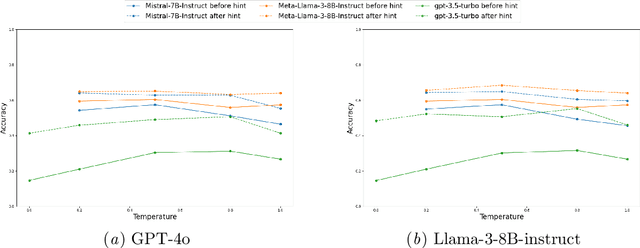Automatic Generation of Question Hints for Mathematics Problems using Large Language Models in Educational Technology
Paper and Code
Nov 05, 2024



The automatic generation of hints by Large Language Models (LLMs) within Intelligent Tutoring Systems (ITSs) has shown potential to enhance student learning. However, generating pedagogically sound hints that address student misconceptions and adhere to specific educational objectives remains challenging. This work explores using LLMs (GPT-4o and Llama-3-8B-instruct) as teachers to generate effective hints for students simulated through LLMs (GPT-3.5-turbo, Llama-3-8B-Instruct, or Mistral-7B-instruct-v0.3) tackling math exercises designed for human high-school students, and designed using cognitive science principles. We present here the study of several dimensions: 1) identifying error patterns made by simulated students on secondary-level math exercises; 2) developing various prompts for GPT-4o as a teacher and evaluating their effectiveness in generating hints that enable simulated students to self-correct; and 3) testing the best-performing prompts, based on their ability to produce relevant hints and facilitate error correction, with Llama-3-8B-Instruct as the teacher, allowing for a performance comparison with GPT-4o. The results show that model errors increase with higher temperature settings. Notably, when hints are generated by GPT-4o, the most effective prompts include prompts tailored to specific errors as well as prompts providing general hints based on common mathematical errors. Interestingly, Llama-3-8B-Instruct as a teacher showed better overall performance than GPT-4o. Also the problem-solving and response revision capabilities of the LLMs as students, particularly GPT-3.5-turbo, improved significantly after receiving hints, especially at lower temperature settings. However, models like Mistral-7B-Instruct demonstrated a decline in performance as the temperature increased.
 Add to Chrome
Add to Chrome Add to Firefox
Add to Firefox Add to Edge
Add to Edge